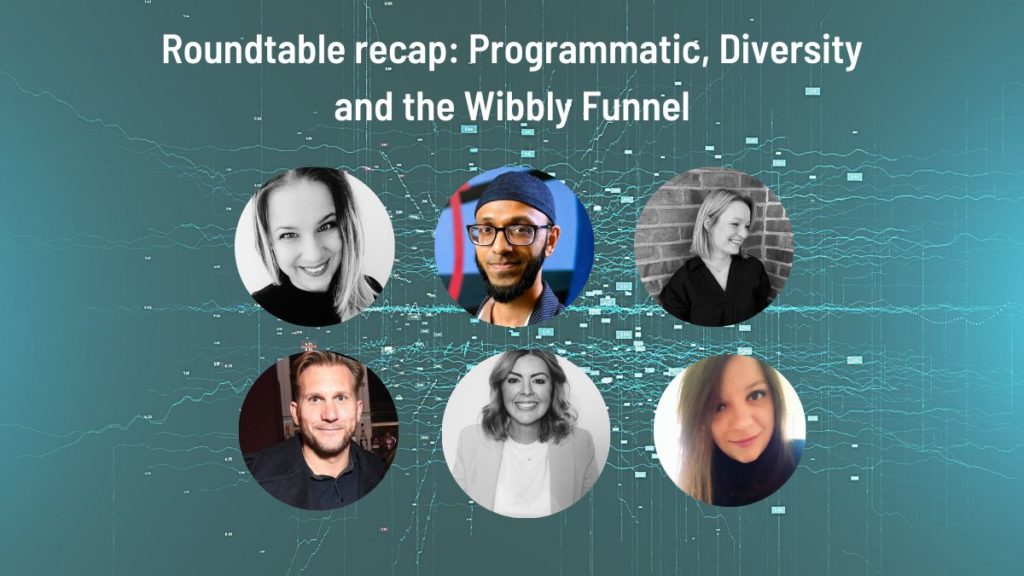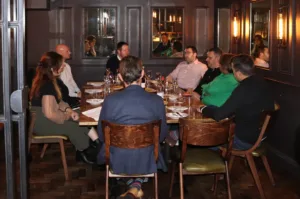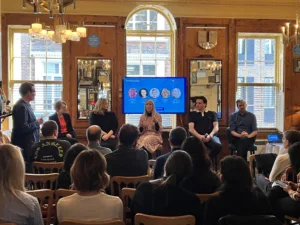As advertisers and media buyers continue to plot a future without the use of third-party cookies, does the programmatic industry have the will to find a unified way forward? What’s more, is the programmatic industry open enough to those from diverse backgrounds who might provide the fresh outlook needed?
These were among the issues debated by New Digital Age (NDA) to a panel of experts in London recently. NDA’s editor Justin Pearse chaired the roundtable discussion and was joined by: Nikky Hudson, Head of Product – Data and Programmatic Services at Nano Interactive; Lee Cutter, Vice President of Sales (UK and emerging markets) at Hivestack; Clare Ritchie, SVP Global Head of Programmatic & Inhousing, Omnicom Media Group (OMG); Stevie Antonioni, Director, Digital Sales & Innovation at The Telegraph; Azad Ali, Head of Performance Insight at Spark Foundry; and Sophie Toth, programmatic and adtech expert and Co-founder of The Women in Programmatic Network.
Omnicom’s Clare Ritchie believes that the deprecation of third-party cookies represents a positive move for the programmatic industry but warned against relying too heavily on smart tech alone in response.
Ritchie said: “ Programmatic is not a channel, it is a powerful way of accessing and buying inventory that lets you make more decisions than is possible on an individual instance level. Used properly, technology is the efficient enabler to delivering effective advertising. Introducing data into the equation allows you to balance the scales between efficiency, reach and relevance. Like anything however, if you are reducing the audience pool (in this case relying on cookie-only strategies) you are missing huge swathes of people that could be relevant for your campaigns.
“I’m reticent about advocating the siloed use of automated technology. Human insight adds relevancy and context, ensuring campaigns resonate with the right audience, especially as newer opportunities like CTV and digital audio are added to the programmatic mix. Comparative to a neat funnel, the consumer’s journey to purchase has become unstructured, with multiple entry points. It is deserving of an omnichannel strategy and human intelligence to bring it all together.”
Ali agreed with Ritchie’s point about programmatic not being a channel in itself: “One frustrating consequence of programmatic being viewed this way is that programmatic traders are expected to be subject experts in just about everything. In reality, these channels have different levels of maturity, different objectives, different KPIs. There’s definitely a role for machine learning in helping to optimise the performance of different channels, but it’s important to build in knowledge from different channel specialists as part of an omnichannel, holistic approach to a campaign.”
Context and collaboration
Cutter of digital Out of Home (DOOH) platform Hivestack, said: “We’ve been on a slightly different path, because we don’t necessarily rely on knowing a person’s digital journey. We can target custom audiences in a variety of ways, including mobile location data, for example. It’s not one-to-one marketing; it’s ‘one to a well-defined many’.
“Increasingly though, advertisers are focusing more and more on the contextual relevance of their campaigns and tapping into real-world moments that can be used to trigger activity. For example, if you are a chemist advertising cold remedies, and the temperature drops below average for three days in a row, that could provide a trigger for you to up your ad spend the following week, as more people are likely to be sick. For us, contextual relevance doesn’t need to focus on the individual, the world at large can provide the triggers we need.”
Antonioni argued that it is in the industry’s own interest to collaborate on its various solutions in the post-cookie era of digital marketing: “I guess the million dollar question is, as an industry, can we find a unified solution? To me, it doesn’t feel like that right now, when you have a huge wave of companies offering ID solutions and the like. That leaves the industry open to more outside regulation by governments around the world. I think we should take control as an industry before someone else takes that control out of our hands.”
A broad church?
In recent years, the programmatic industry has been working hard to become more diverse in terms of the gender and background of its teams, but our panel agreed that there was still lots of work to be done.
Sophie Toth spoke about her own efforts to redress the gender balance: “Together with Emily Robberts, we established The Women in Programmatic Network to support women on their journey in the industry. We’re now at the point where we want to extend the network not just to support women, but to encourage diversity in other ways, perhaps by creating sub-groups relating to parenting or for more junior level team members. In 2023, industry diversity is about creating a safe place for everyone, and we want our network to be somewhere that people can come and share their thoughts, to inspire others and be inspired themselves.”
Hudson of Nano Interactive added: “I want the right person for the role, no matter who (or where) they are. We have team members based in other countries and cultures and I think that adds a lot to the mix.
“Also, I think we need to move beyond graduate recruitment policies. Personally, I never went to university. My first job was outside the industry. Programmatic was something I ‘fell into’ and I worked my way up. The industry needs to do a better job at recruiting a wider pool of talent from different socio-economic backgrounds; people that may not have a degree in maths, but can still bring a lot of great ideas and value to the table.”









